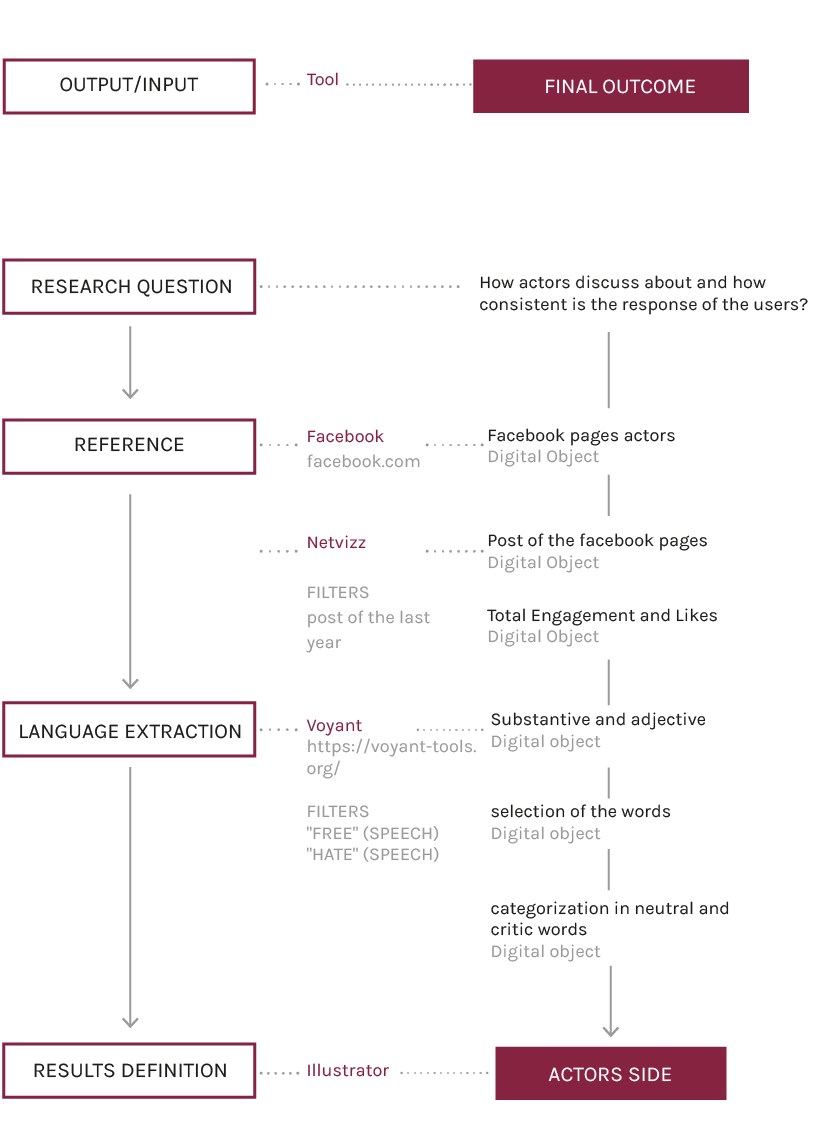Description
After analyzing the connections between the major actors and the Facebook profiles linked to them, the analysis of the debate on Freedom of Speech has been concluded through a research process aimed at understanding their position within the dispute. With this aim, the posts have been filtered and counted based on the presence of the terms "hate" and "freedom" in the posts, respectively read as indicators of an array that condemns hate speech on one side, and that is in favor of unconditional freedom of speech on the other. The results confirmed the forecasts made on the basis of information already known on the actors, which proved to be mostly in favor of freedom of speech. A clarification in this case should be made to point out that the term "freedom" is used by both parties as a positive value while the only differential term to distinguish the alignments is represented by the the word "hate", as it subtends a specific desire to underline the problems generated by total freedom of speech.
Subsequently, the research focused on a qualitative analysis of the terms associated with the most used words "hate" and "freedom", with the support of the Ayilien Tool which provided a categorization of the same based on the Sentiment that distinguishes them. They were therefore placed on the basis of the polarity of the values between negative, neutral and positive. These results, however fragmentary for the absence of a context of belonging, have made possible an overview of the different terms chosen by the actors to address the issue and express their point of view on the subject.
Finally, thanks to the additional data of the Likes associated with the posts of each actor, it was possible to identify the consistency of users who follow and share the thoughts of the respective public figure, as well as the information on the intensity of the users' debate for each actor, provided by the degree of commitment of each post.
The first graph shows a general look to the overall situation, making comparison between the actors: from the left are aligned the number of annual posts for each actor, at the center there is the ideological positioning with the percentage of users who like the same thought, while on the right the percentage data of the comments made to the posts of each actor. The second graph below shows for each actor the type of words used in posts, distinguished by sentiment as a definition of the general attitude with which actors deal with the controversy.
Protocol

Download of the post for each actor from Facebook.
First screening of the contents using Voyant Tool.
Voyant analysis through links between “free” and other terms.
Voyant analysis through links between “hate” and other terms.
Count of the frequency of seeds and dependent terms through Voyant.
Selection from one to two terms for each actor.
Quantitative selection of the most consistent terms associated to “free” for each actor.
Quantitative selection of the most consistent terms associated to “hate” for each actor.
Categorization of the dependent terms between the radical ones and the neutral ones.
Visualization of three complementary graphs.
